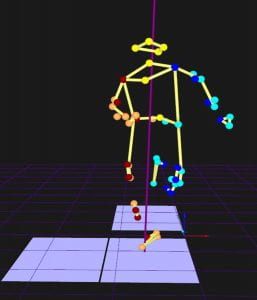 Agility is essential to participation in many multi-directional sports. However, change of direction tasks are associated with knee injuries, particularly anterior cruciate ligament (ACL) injury. Injury prevention programs aimed at improve potentially injurious mechanics typically focus on improving jumping and landing mechanics. Mechanics necessary for successful completion of a cutting task are very different than those needed to perform jumping and landing tasks (another high risk activity for ACL injury). As such it is critical to understand the demands and potentially injurious mechanics related to change of direction tasks, to inform effective injury prevention programs.
Agility is essential to participation in many multi-directional sports. However, change of direction tasks are associated with knee injuries, particularly anterior cruciate ligament (ACL) injury. Injury prevention programs aimed at improve potentially injurious mechanics typically focus on improving jumping and landing mechanics. Mechanics necessary for successful completion of a cutting task are very different than those needed to perform jumping and landing tasks (another high risk activity for ACL injury). As such it is critical to understand the demands and potentially injurious mechanics related to change of direction tasks, to inform effective injury prevention programs.
In order to inform both injury prevention and sports performance research, this project investigated the effects of velocity and change of direction magnitude on whole body mechanics and anticipatory adjustments made during quick change of direction maneuvers. Healthy college and professional soccer players perform cutting tasks with maximal effort in the state-of-the-art laboratory, and their movements are captured with motion analysis cameras and embedded force platforms, then analyzed using custom software
Related publications:
Havens KL and Sigward SM. Whole Body Postural Mechanics of Running Turn Maneuvers. Gait & Posture, 42(3):240-245, 2015
Havens KL and Sigward SM. Joint and Segmental Mechanics of Running Turn Maneuvers. Gait & Posture, 41(1):33-38, 2015
Havens KL and Sigward SM. Cutting Mechanics: Relationship to Performance and ACL Injury Risk. Medicine & Science in Sports & Exercise, 47(4): 818-824, 2015.
Sigward SM, Guilherme GM, Havens KL. Predictors of Frontal Plane Moments During Side-step Cutting to 450 and 1100 in Men and Women: Implications for ACL Injury. Clinical Journal of Sports Medicine, 25(6):529-534, 2015.